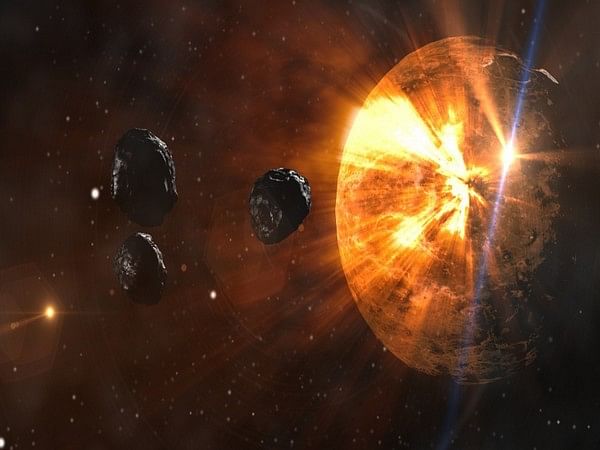Washington [US], September 24 (ANI): While the vast majority of asteroids and comets are not dangerous, and never will be, it’s also true that 66 million years ago, a giant asteroid impact on the Earth likely caused the extinction of the dinosaurs.
Hence, if one day a large asteroid were to be discovered on a collision course with Earth, it might have to be deflected from its trajectory to prevent catastrophic consequences. To do so, in what can only be termed the world’s first planetary defence test, the American space agency NASA will soon create history when it crashes a spacecraft into an asteroid. This could be used to defend our planet if a hazardous asteroid were ever to be discovered.
According to NASA, the mission, known as the Double Asteroid Redirection Test, or DART, on September 26 will attempt to alter the orbit of the asteroid Dimorphos which is a tiny moon of the asteroid Didymos. It’s an ideal target for NASA to test an important element of its planetary defence plan and doing so poses no threat to our planet.
NASA reported that with a diameter of about 525 feet (160 meters) Dimorphos is the smaller of two asteroids in a double-asteroid system. Dimorphos orbits the larger asteroid Didymos every 11 hours and 55 minutes.
At the time of DART’s impact, the asteroid pair will be 6.8 million miles (11 million kilometres) away from Earth as they travel in their orbit around the Sun. The DART spacecraft is designed to collide head-on with Dimorphos to alter its orbit, shortening the time it takes the small asteroid to travel around Didymos.
When DART hits the surface of the asteroid, its kinetic energy will be 10 billion joules. A crater will be formed and material known as ejecta will be blasted out due to the impact. In the days following the event, NASA expects to receive images of the impact from a cubesat that will be deployed by DART before impact, states the Space agency.
Even though there are no known objects currently posing a threat to Earth, scientists continue scanning the skies for unknown asteroids. Should one be discovered, NASA is actively researching and planning for ways to prevent or reduce the effects of a potential impact.
In future, by using the knowledge gained from this demonstration, similar techniques can be used to deflect an asteroid or comet away from our planet if it were deemed hazardous for the Earth. (ANI)
This report is auto-generated from ANI news service. ThePrint holds no responsibility for its content.



